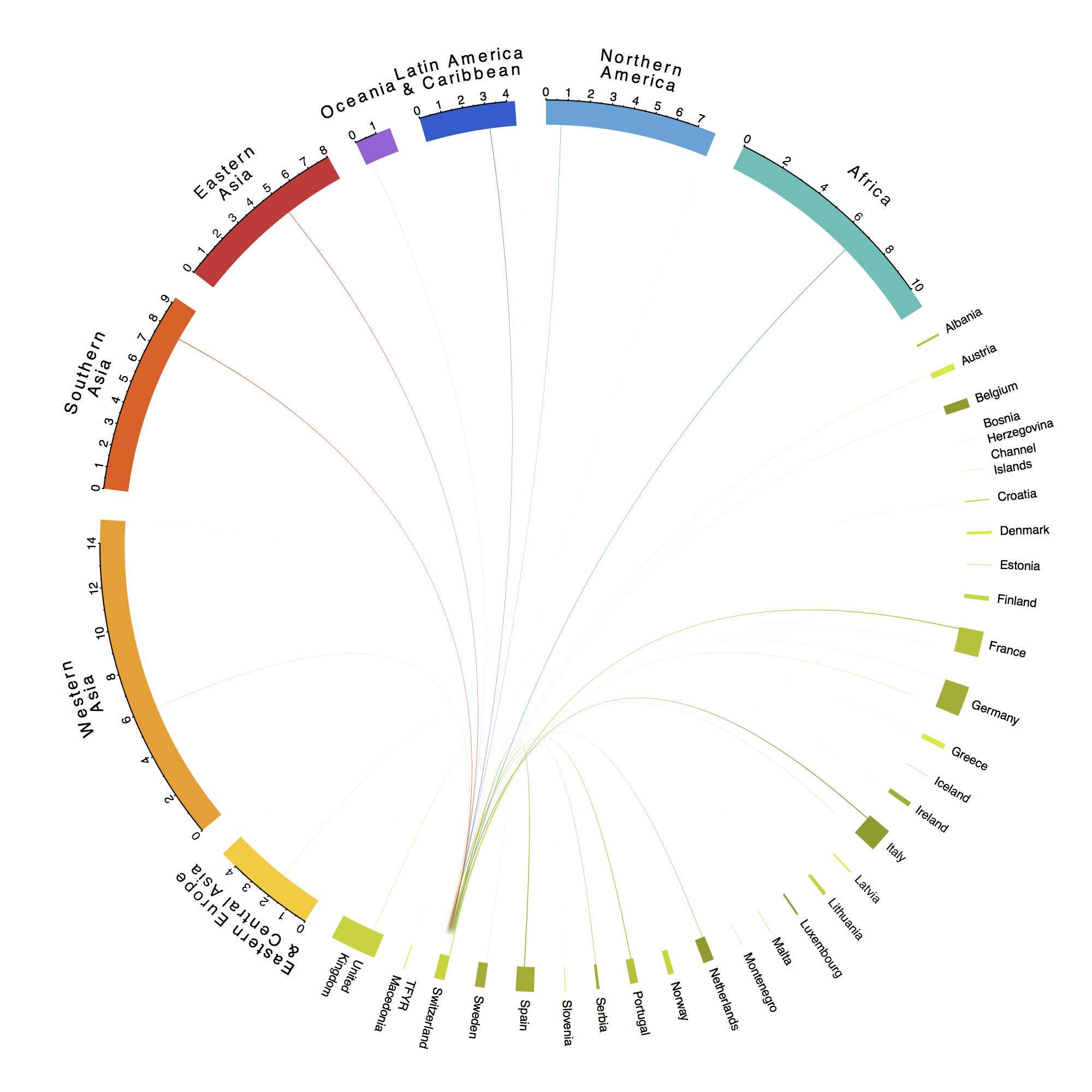Are we really facing an unprecedented migrant crisis?
Phrases like "refugee crisis" and "migrant waves" have routinely made the headlines in recent years. But is the prevailing feeling that Europe is facing an unparalleled level of mass migration backed by hard numbers?
Here is a much quoted figure released by the United Nations that we used in our previous story: 244 million migrants worldwide in 2015 making up 3.3% of the global population. However, these impressive numbers represent migrant stocks, i.e. the cumulated number of people living in a country different to where they were born, making no distinction between an exchange student abroad for a year or somebody who has been living in a different country for 40 years.
Fortunately, researchers have managed to quantify who moved where and when. Guy J. Abel*, a Professor at Shanghai University’s Asian Demographic Research Institute, has developed a method to infer global migration dynamics over time from such migrant stock data. He published the results in the journal ScienceExternal link and shares some finding below. The graphic may appear complex but so are global migration flows.
Highlights of the graphic:**
-
The largest global migrant flows take place within individual world regions, not across continents. This is illustrated by the thickest arrows in the chart, which tend to point to the same continent they originated from. The arrows represent the migration of hundreds of thousands of people from places like India to Dubai or from Syria to Lebanon.
-
More people migrate within Europe than come to Europe from Africa.
-
People don’t primarily move from the poorest to the richest countries. Instead people generally move to countries where the economy is somewhat stronger than in their native country. For example, from Bangladesh to India or from Zimbabwe to South Africa or from Italy to Switzerland.
This visualization puts into perspective a common Eurocentric worldview that the whole world is trying to come to Europe. One cannot simply dismiss the challenges that Europe is currently facing with a strong influx of refugees and other migrants over the last couple of years. However, the number of people coming to Europe represents only a fraction of the global migration flows.
Swiss scenario
The image below shows an overview of the migration flows into Switzerland alone. The message is similar, immigration from different individual European nations (in green) is comparable in size to other world regions.

The lowest global migration since 1960
Worldwide migration can be estimated from as far back as 1960External link and data from the past puts current migration into context. The share of migrants worldwide has been astonishingly constant for more than half a century at around 0.6% of the global population. In other words, for every five-year period, six out of 1,000 people have moved to a different country. Thus the 0.5% migrant population for the last previous five years is the smallest value since 1960. The global migration rate reached an historic peak between 1990 and 1995, a period when the Iron Curtain had fallen and the Yugoslav Wars had started.
Migration series
Voting by the Swiss people to limit foreigners; Brexit; tensions within the EU to cope with the influx of asylum seekers – immigration is a key concern across the continent and beyond.
In Switzerland, as in the UK, the government is under pressure to limit the influx of immigrants at the risk of jeopardizing access to the European market. Through graphics, swissinfo.ch presents a series on immigration to illustrate these pressures.
From global migration flows to the evolving Swiss population, these weekly graphics key figures to help better inform people.
* Guy J. AbelExternal link is a Professor at the Asian Demographic Research Institute, Shanghai University & researcher at the Vienna Institute of Demography.
** Conclusions on the graphic are quotes of Guy J. Abel from an article in der SpiegelExternal link
See also
To explore the migration flows since 1990 http://www.global-migration.infoExternal link

More
Defining the 25% foreign population in Switzerland

More
With 244 million immigrants in the world, which country has the most?

In compliance with the JTI standards
More: SWI swissinfo.ch certified by the Journalism Trust Initiative









You can find an overview of ongoing debates with our journalists here . Please join us!
If you want to start a conversation about a topic raised in this article or want to report factual errors, email us at english@swissinfo.ch.